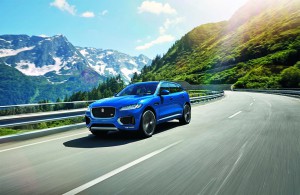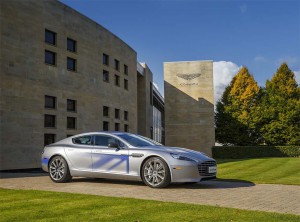Jaguar appears ready to join the rapidly growing list of luxury brands planning to offer long-range electric vehicles.
Several senior officials contacted by TheDetroitBureau.com confirmed an electric vehicle program is underway, and it could result in a variant of the new Jaguar F-Pace SUV, in this case renamed the E-Pace.
“Plans are still developing,” said one source, asking not to be identified due to the sensitivity of the topic. But others stressed that Jaguar will need a variety of new, higher-mileage technologies, ranging from diesel to hybrid to pure battery-electric, to meet tough global emissions and fuel economy standards.
The battery-electric E-Pace is expected to share some key elements of the new global architecture being used by the F-Pace and new XE sedan. Those conventionally powered models will make extensive use of lightweight aluminum, but the E-Pace body is likely to go even further, and may add some super-light carbon fiber to the mix.
It will, meanwhile, feature an even more aerodynamic shape, something critical to boosting both range and performance.
The specific drivetrain configuration is uncertain, but the Jaguar E-Pace likely will use at least two electric motors, one or more for each axle. That would create a so-called through-the-road all-wheel-drive system, among other things eliminating the need for a heavy driveshaft.
(Jaguar Land Rover sticking to its diesel guns. For more, Click Here.)
Expect to see a lithium-ion battery pack of at least 60 kilowatt-hours, perhaps as much as 90. That would more than double what most of today’s electric vehicles use – with the exception of Tesla, which is offering optional packs up to 90 kWh on the Model S sedan and new Model X SUV.
That would be essential to making the E-Pace more competitive, according to insiders, who believe that tomorrow’s battery-electric models will need to deliver at least 200 miles – and good performance – in order to be more than just low-volume niche products.
The new Tesla Model X will reach nearly 300 miles with its biggest battery pack and Audi plans to hit market in 2018 with a production version of the e-tron Quattro concept it debuted at the Frankfurt Motors Show that electric SUV promised to run more than 300 miles per charge.
(Jaguar crosses over with new F-Pace. For more, Click Here.)
Virtually every luxury manufacturer has announced some form of electrification program. Even Aston Martin is working up an electric drive system, that British maker last week showing off a prototype version of its four-door sports car, the RapidE. It may use the electric drive system in its planned DBX SUV, as well.
Some makers are focusing on plug-in hybrids. Cadillac will offer a version of that technology in its new CT6 sedan. Mercedes-Benz will add 10 plug-ins to its line-up by 2018, as well as some pure battery-electric models.
Jaguar and sibling brand Land Rover are expected to also offer plug-in and conventional hybrids.
(The new F-Pace is just part of a “fundamental transformation for Jaguar. Click Here for more.)
Industry experts stress that this approach will be essential to meeting new global regulations. And a number of cities in Europe are threatening to ban vehicles not running on zero-emissions powertrains. China, the world’s second-largest luxury market, meanwhile, is pressuring makers to go electric – and many cities there, including Beijing and Shanghai, are limiting registration of vehicles that are not battery-based.


